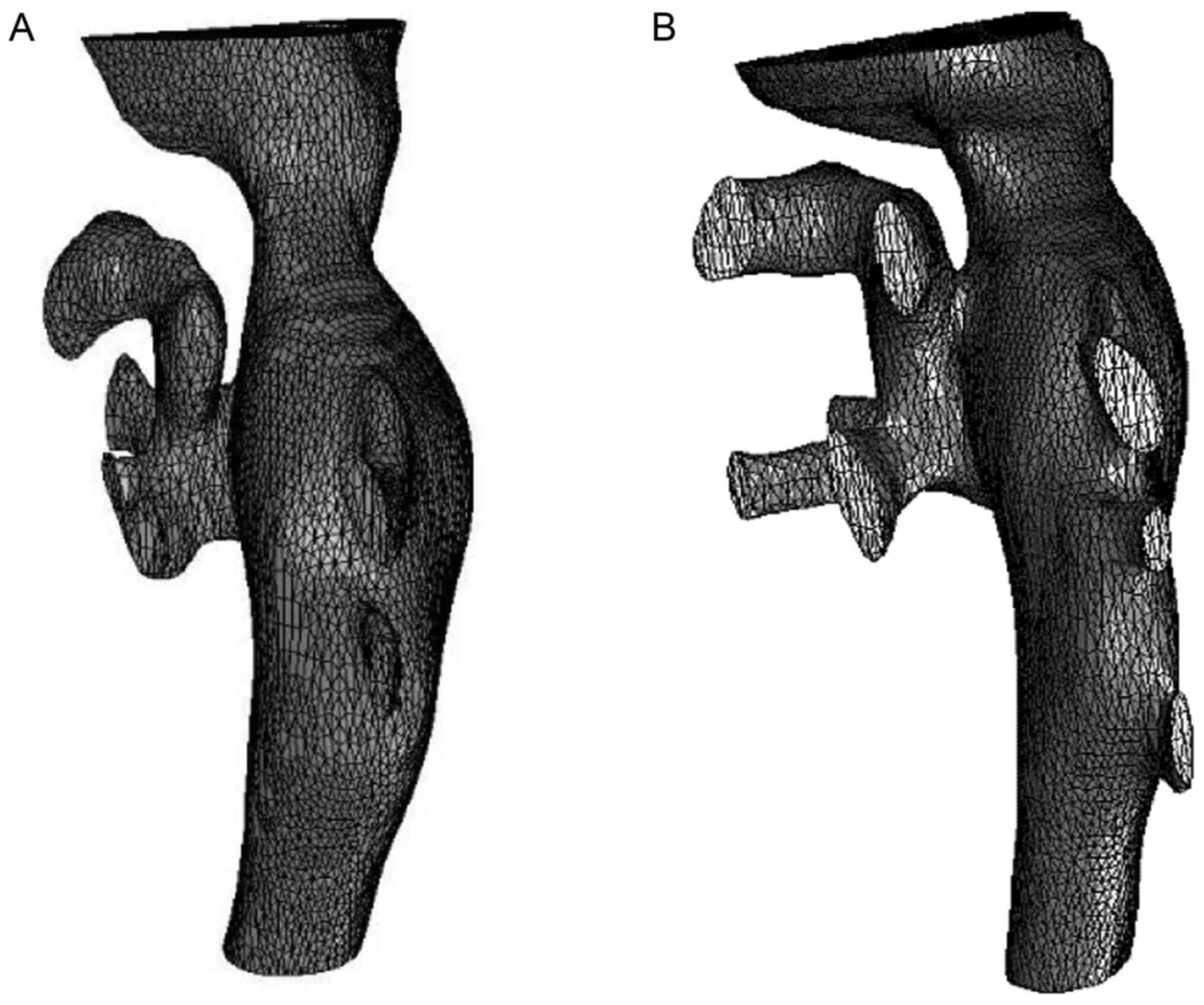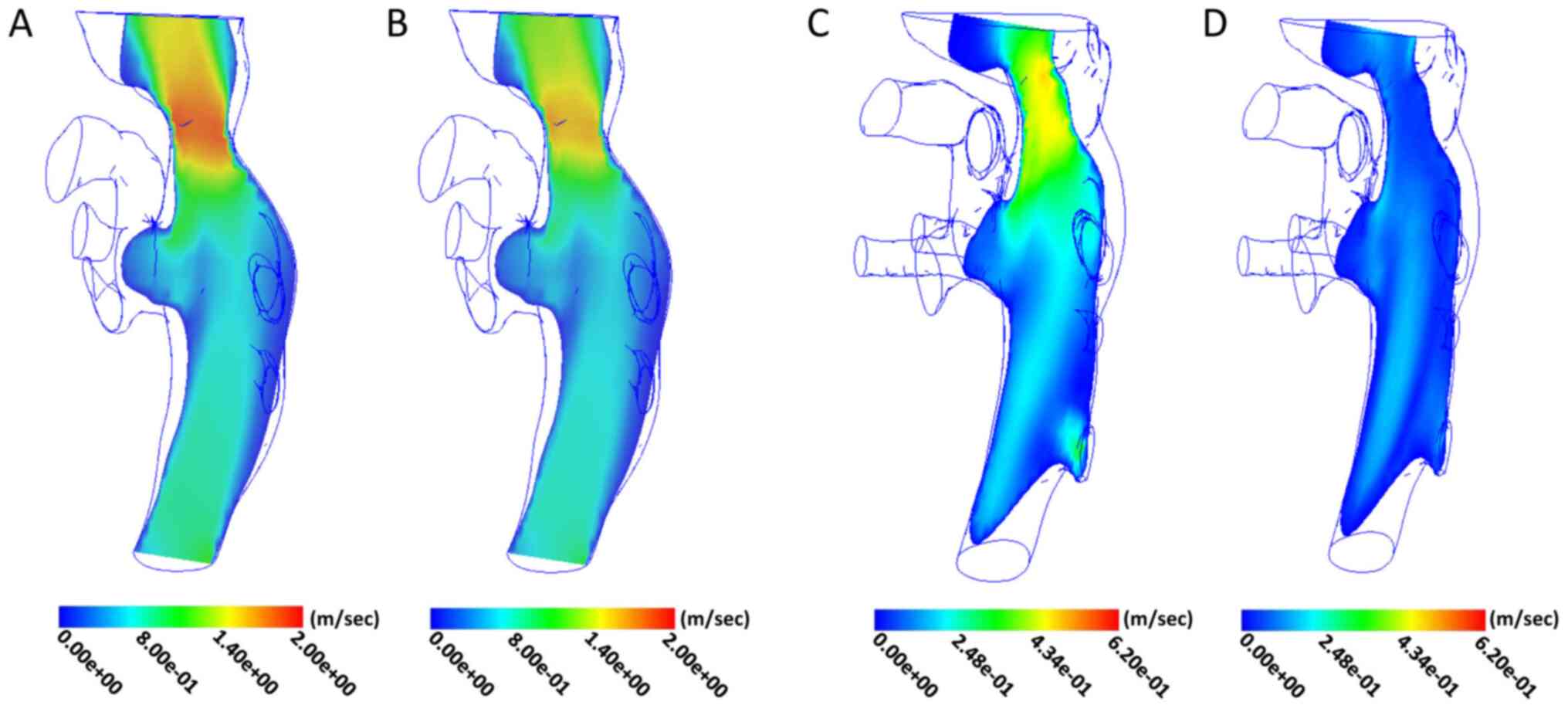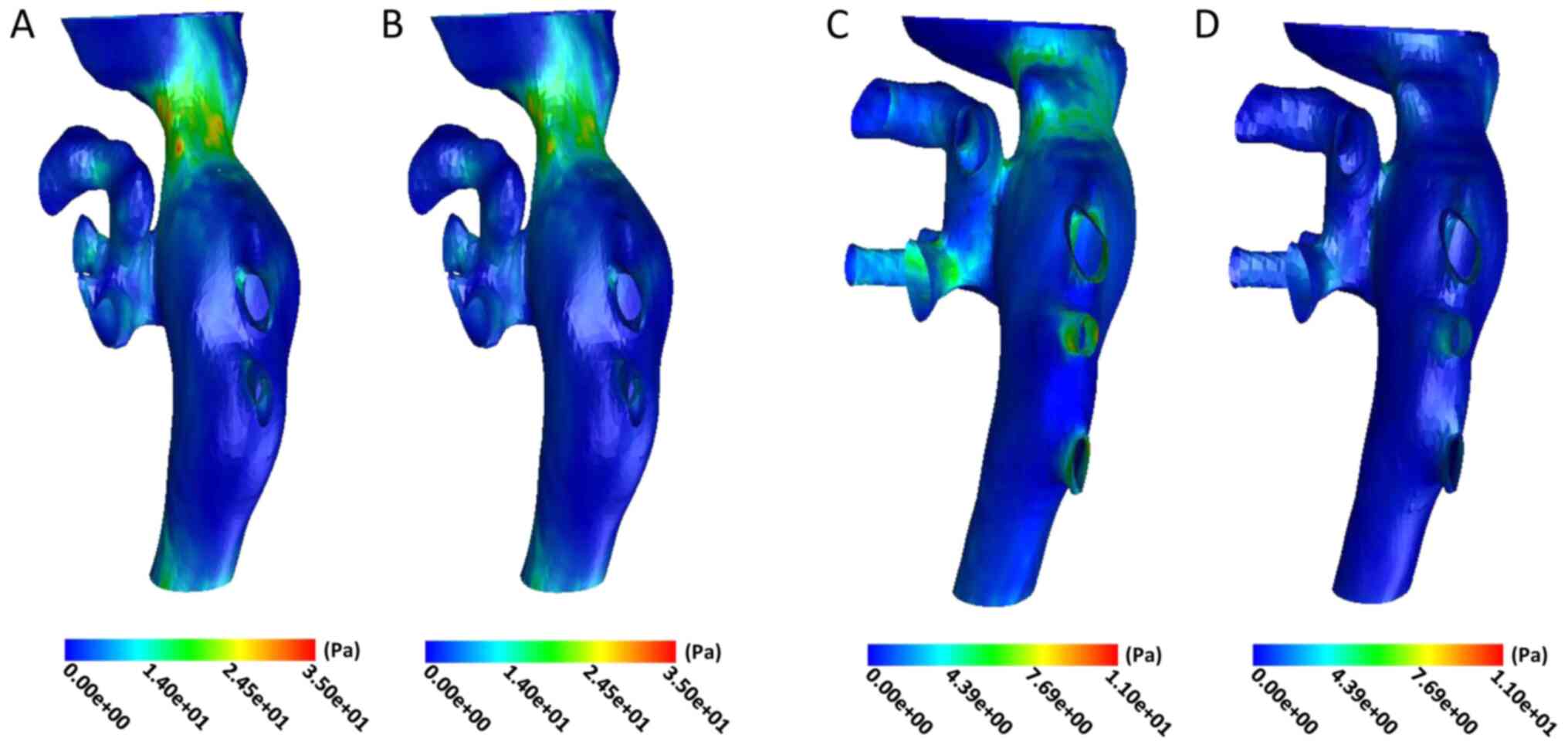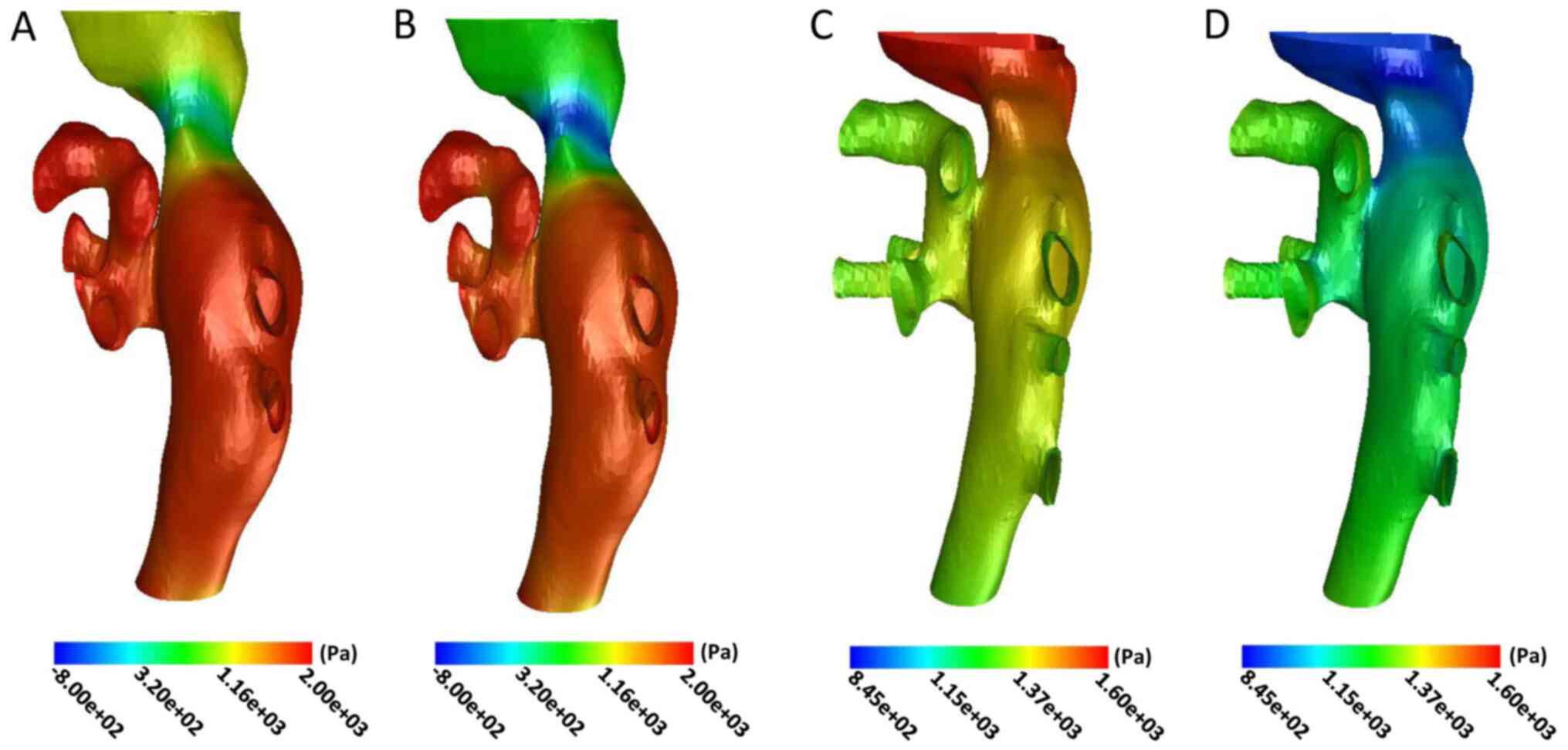|
1
|
Copelan A, Remer EM, Sands M, Nghiem H and
Kapoor B: Diagnosis and management of Budd Chiari syndrome: An
update. Cardiovasc Intervent Radiol. 38:1–12. 2015.PubMed/NCBI View Article : Google Scholar
|
|
2
|
Huang Q, Shen B, Zhang Q, Xu H, Zu M, Gu
Y, Wei N, Cui Y and Huang R: Comparison of long-term outcomes of
endovascular management for membranous and segmental inferior vena
cava obstruction in patients with primary Budd-Chiari syndrome.
Circ Cardiovasc Interv. 9(e003104)2016.PubMed/NCBI View Article : Google Scholar
|
|
3
|
Mukund A, Pargewar SS, Desai SN, Rajesh S
and Sarin SK: Changes in liver congestion in patients with
Budd-Chiari syndrome following endovascular interventions:
Assessment with transient elastography. J Vasc Interv Radiol.
28:683–687. 2017.PubMed/NCBI View Article : Google Scholar
|
|
4
|
Fukazawa K, Ishida F, Umeda Y, Miura Y,
Shimosaka S, Matsushima S, Taki W and Suzuki H: Using computational
fluid dynamics analysis to characterize local hemodynamic features
of middle cerebral artery aneurysm rupture points. World Neurosurg.
83:80–86. 2015.PubMed/NCBI View Article : Google Scholar
|
|
5
|
Numata S, Itatani K, Kanda K, Doi K,
Yamazaki S, Morimoto K, Manabe K, Ikemoto K and Yaku H: Blood flow
analysis of the aortic arch using computational fluid dynamics. Eur
J Cardiothorac Surg. 49:1578–1585. 2016.PubMed/NCBI View Article : Google Scholar
|
|
6
|
Gharahi H, Zambrano BA, Zhu DC, DeMarco JK
and Baek S: Computational fluid dynamic simulation of human carotid
artery bifurcation based on anatomy and volumetric blood flow rate
measured with magnetic resonance imaging. Int J Adv Eng Sci Appl
Math. 8:46–60. 2016.PubMed/NCBI View Article : Google Scholar
|
|
7
|
Cheng D, Zhuang Y, Kou Q, Zhang M, Zhao Y,
Han C, Li J, Wang Y, Xu K, Mo F and Zhang J: Numerical simulation
of hemodynamics in membranous obstruction of the suprahepatic
inferior vena cava based on a subject-specific Budd-Chiari syndrome
model. Clin Biomech (Bristol, Avon). 52:20–24. 2018.PubMed/NCBI View Article : Google Scholar
|
|
8
|
Khalafvand SS, Ng EY, Zhong L and Hung TK:
Three-dimensional diastolic blood flow in the left ventricle. J
Biomech. 50:71–76. 2017.PubMed/NCBI View Article : Google Scholar
|
|
9
|
Katritsis DG, Theodorakakos A, Pantos I,
Andriotis A, Efstathopoulos EP, Siontis G, Karcanias N, Redwood S
and Gavaises M: Vortex formation and recirculation zones in left
anterior descending artery stenoses: Computational fluid dynamics
analysis. Phys Med Biol. 55:1395–1411. 2010.PubMed/NCBI View Article : Google Scholar
|
|
10
|
Choi G, Lee JM, Kim HJ, Park JB, Sankaran
S, Otake H, Doh JH, Nam CW, Shin ES, Taylor CA and Koo BK: Coronary
artery axial plaque stress and its relationship with lesion
geometry: Application of computational fluid dynamics to coronary
CT angiography. JACC Cardiovasc Imaging. 8:1156–1166.
2015.PubMed/NCBI View Article : Google Scholar
|
|
11
|
Yeri A and Shah RV: Comparison of
computational fluid dynamics and machine learning-based fractional
flow reserve in coronary artery disease. Circ Cardiovasc Imaging.
11(e007950)2018.PubMed/NCBI View Article : Google Scholar
|
|
12
|
Munarriz PM, Gómez PA, Paredes I,
Castaño-Leon AM, Cepeda S and Lagares A: Basic principles of
hemodynamics and cerebral aneurysms. World Neurosurg. 88:311–319.
2016.PubMed/NCBI View Article : Google Scholar
|
|
13
|
Xu K, Ren K and Chen YS: Application and
evaluation of non-invasive imaging examination of Budd-Chiari
syndrome. Chin Med J (Engl). 120:91–94. 2007.PubMed/NCBI
|
|
14
|
Faraoun SA, Boudjella Mel A, Debzi N,
Afredj N, Guerrache Y, Benidir N, Bouzid C, Bentabak K, Soyer P and
Bendib SE: Budd-Chiari syndrome: A prospective analysis of hepatic
vein obstruction on ultrasonography, multidetector-row computed
tomography and MR imaging. Abdom Imaging. 40:1500–1509.
2015.PubMed/NCBI View Article : Google Scholar
|
|
15
|
Wang HW, Shi HN, Cheng J, Xie F, Luo YK
and Tang J: Real-time shear wave elastography (SWE) assessment of
short-and long-term treatment outcome in Budd-Chiari syndrome: A
pilot study. PLoS One. 13(e0197550)2018.PubMed/NCBI View Article : Google Scholar
|
|
16
|
Van Wettere M, Bruno O, Rautou PE,
Vilgrain V and Ronot M: Diagnosis of Budd-Chiari syndrome. Abdom
Radiol (NY). 43:1896–1907. 2018.PubMed/NCBI View Article : Google Scholar
|
|
17
|
Sun C, Zhao Y, Ping J and Cui Y: Numerical
simulation analysis of hemodynamic values of Budd-Chiari syndrome
based on MR image. J Med Postgra. 27:1297–1300. 2014.
|
|
18
|
Nai Q, Ping J, Xu W, Xu H, Wei M and Zhang
W: Analysis of simulated hemodynamic parameters of Budd-Chiari
syndrome with perforated membrane of inferior vena cava before and
after interventional therapy. Chin J Hepatobiliary Surg.
22:734–737. 2016.
|
|
19
|
Yu H, Yan H and Jiang Y: Discussions on
Bernoulli Equations. Insight-Mechanics. 1:12–16. 2018.
|
|
20
|
Xu Y and Zhang L: Changes in shear force
after autologous arteriovenous fistula establishment. Natl Med J
China. 95:3473–3475. 2015.(In Chinese).
|
|
21
|
Van Tricht I, De Wachter D, Tordoir J and
Verdonck P: Hemodynamics and complications encountered with
arteriovenous fistulas and grafts as vascular access for
hemodialysis: A review. Ann Biomed Eng. 33:1142–1157.
2005.PubMed/NCBI View Article : Google Scholar
|
|
22
|
Cao X, Dong G and Yang S: Influence of
shear stress on vascular endothelial function and its mechanism. J
Chin Pract Diagn Ther. 30:956–958. 2016.(In Chinese).
|
|
23
|
Liu Z, Teng Z and Tan K: Stress
distribution on arterial wall under pulsatile flow. Chin J Theor
Appl Mech. 34:696–704. 2002.(In Chinese).
|
|
24
|
Lin Y, Jing Z, Zhao Z, Mei Z, Feng X, Feng
R and Lu Q: Three-dimensional simulation of pulsatile blood low in
human thoracic aorta. Acad J Sec Mil Med Univ. 27:867–875. 2006.(In
Chinese).
|



















